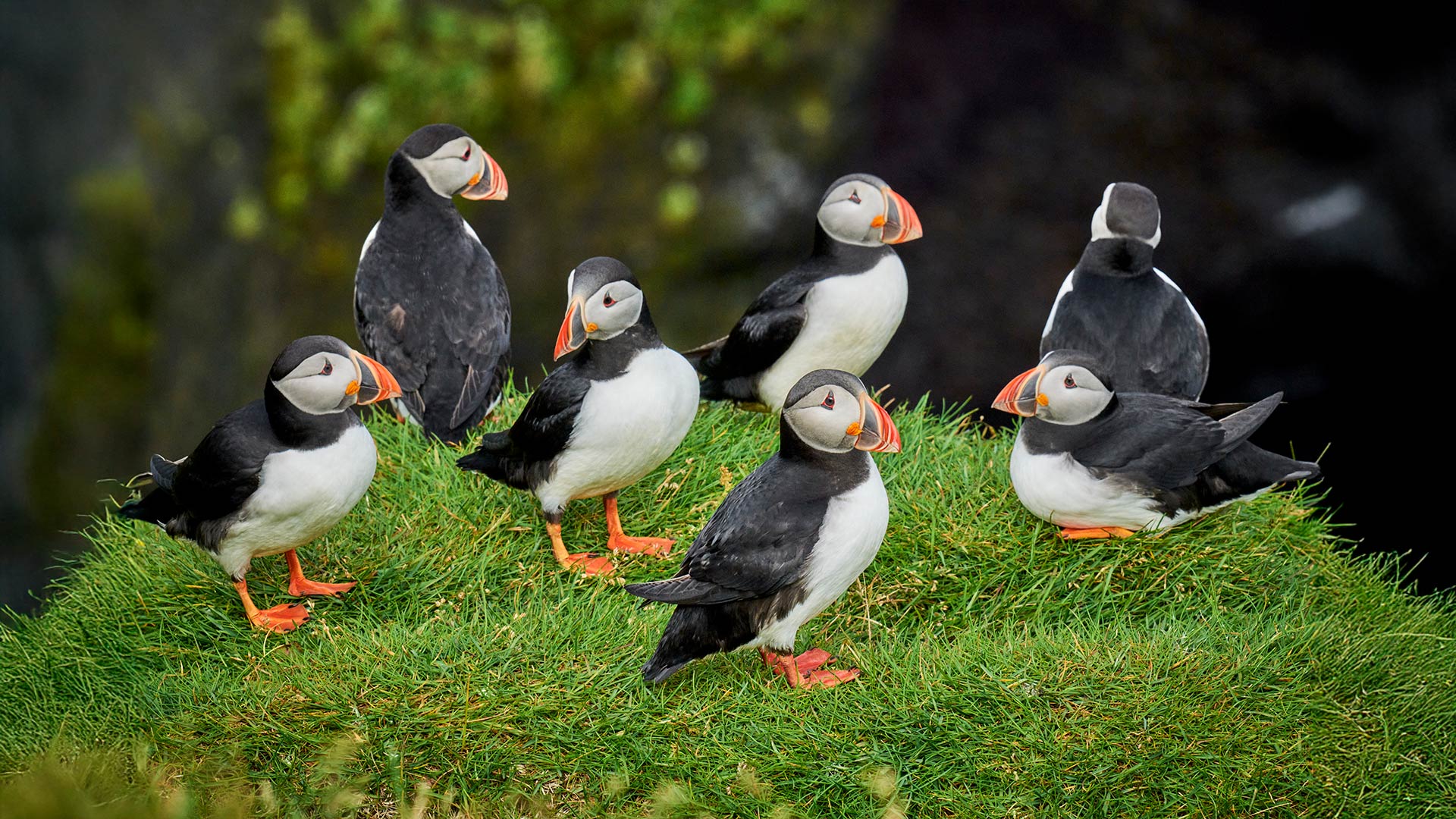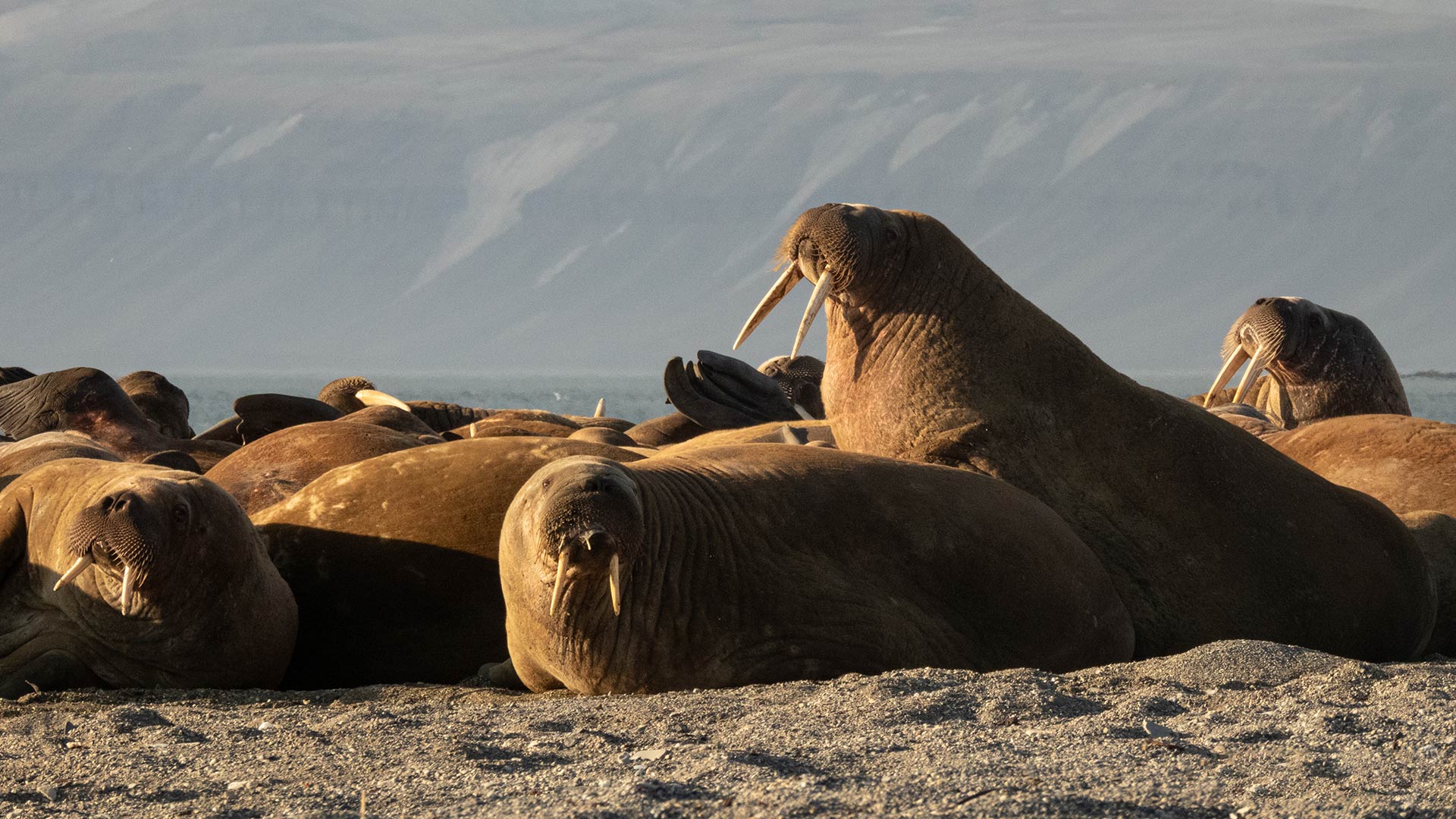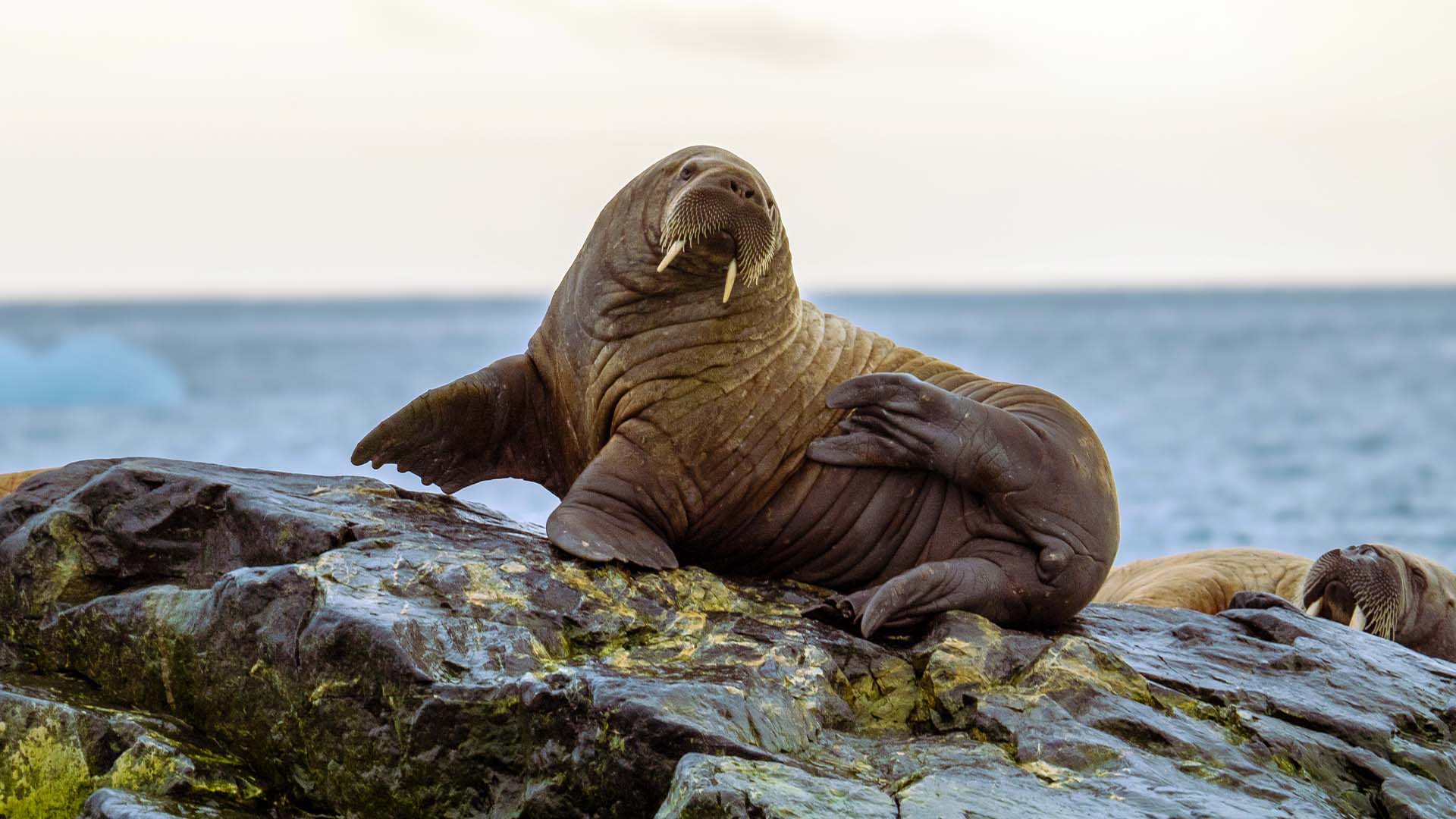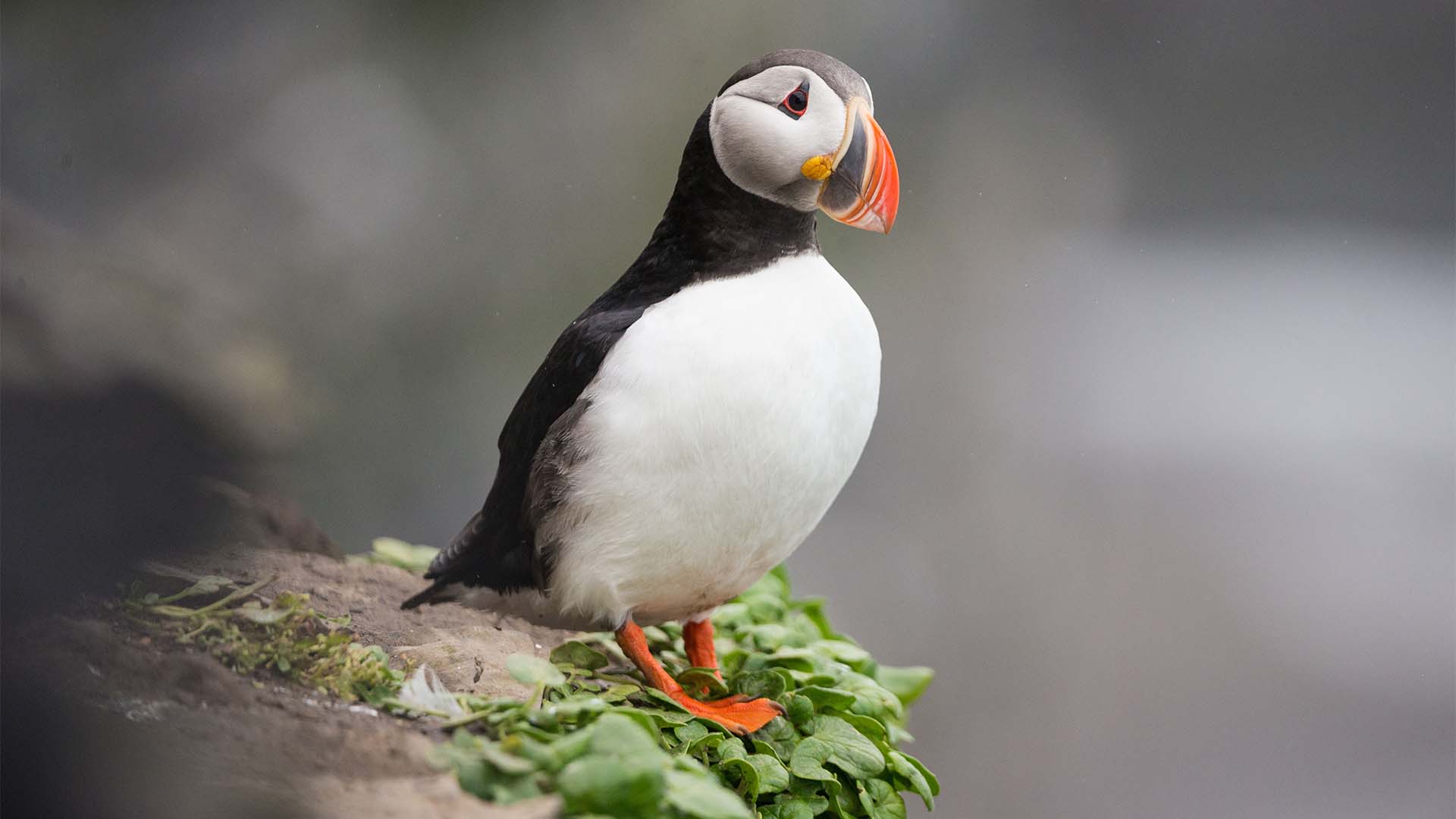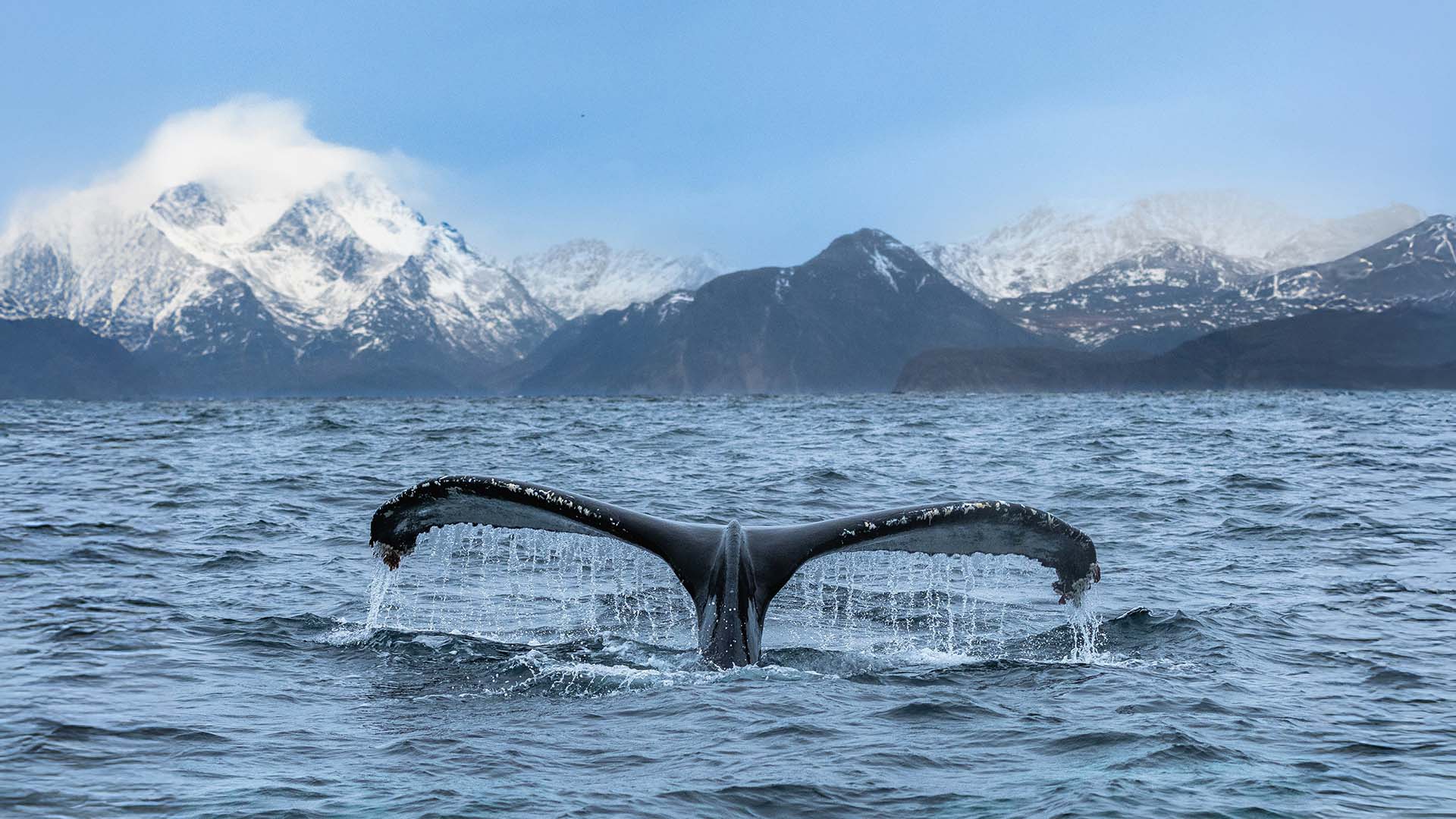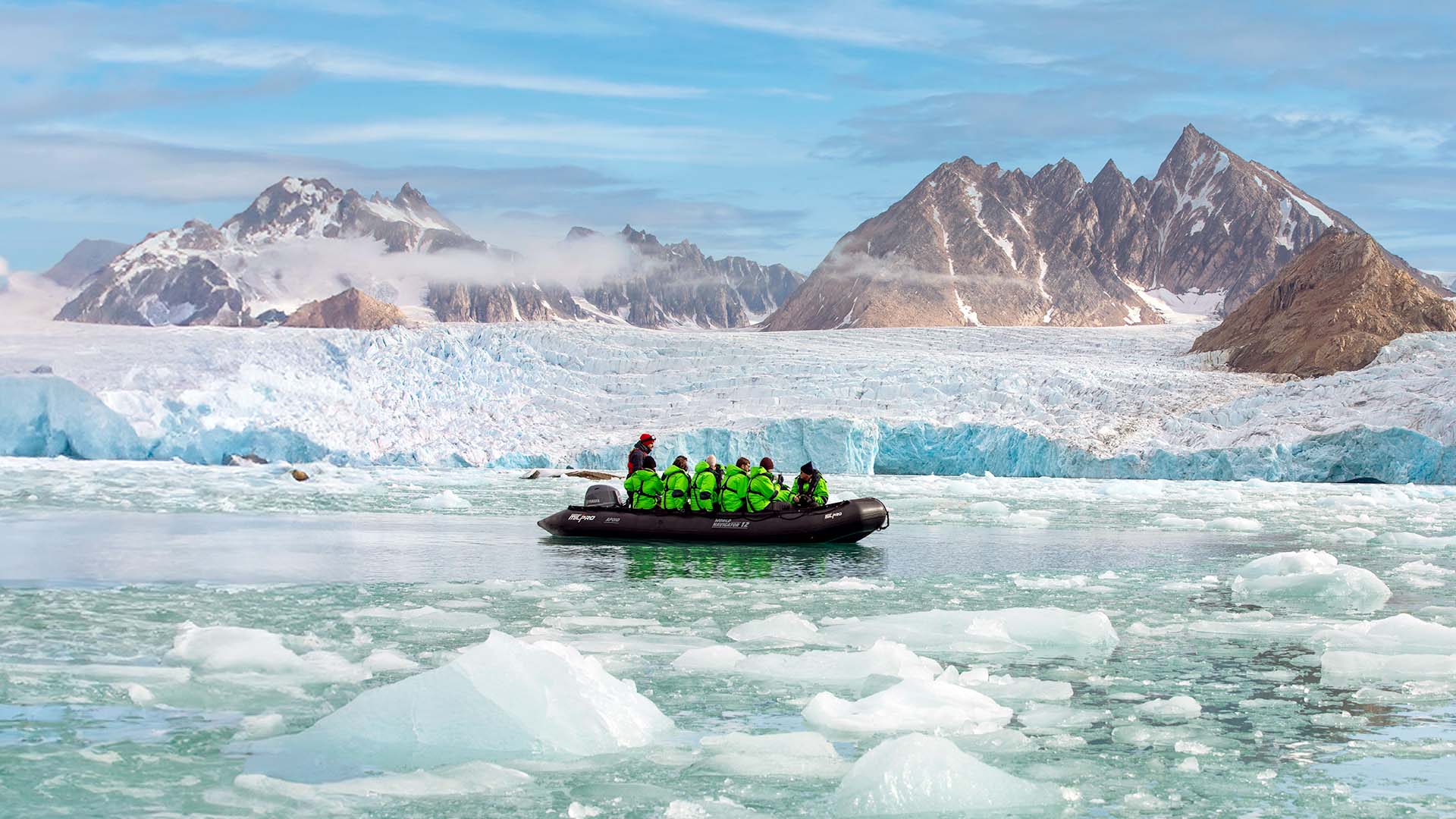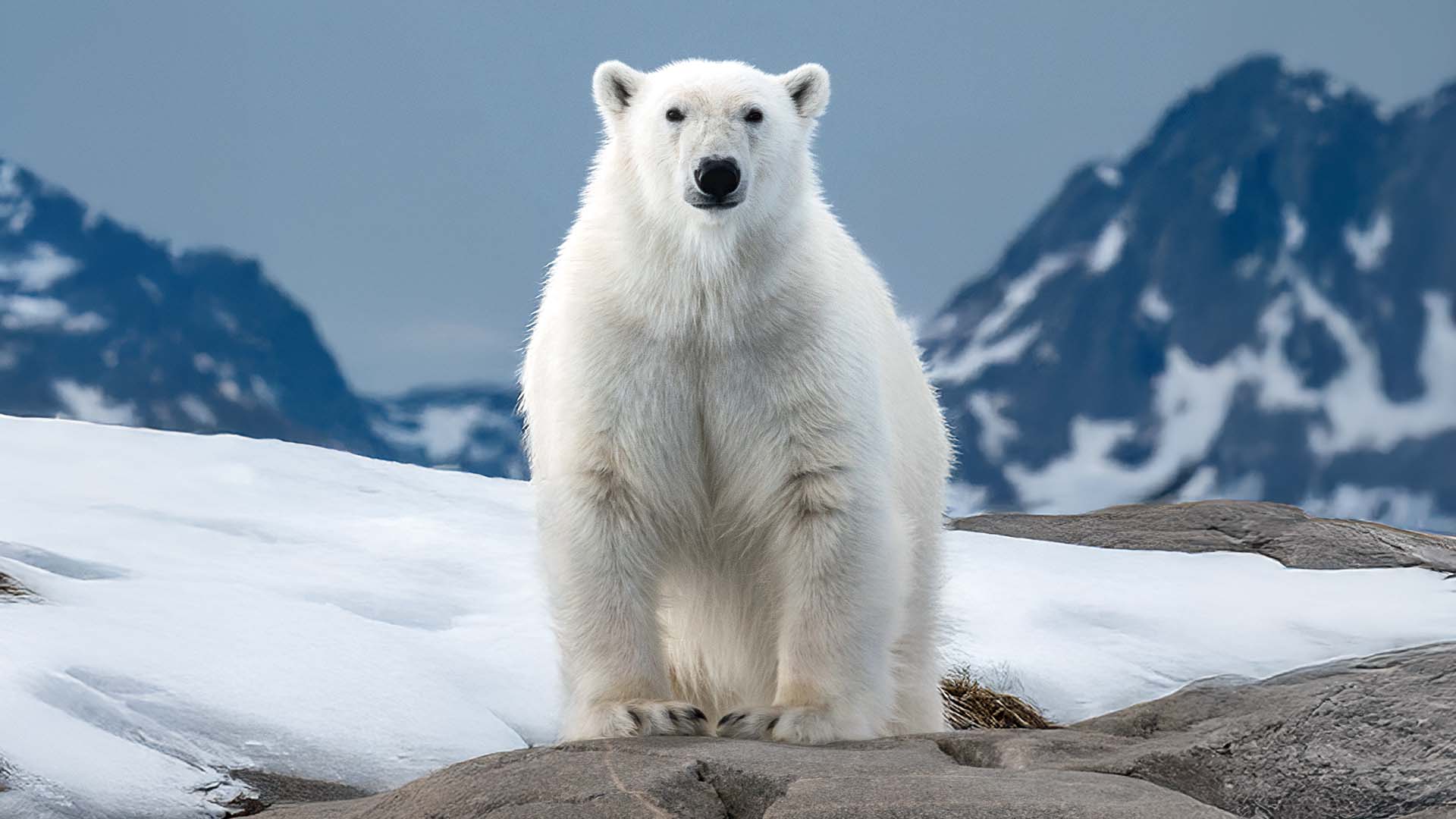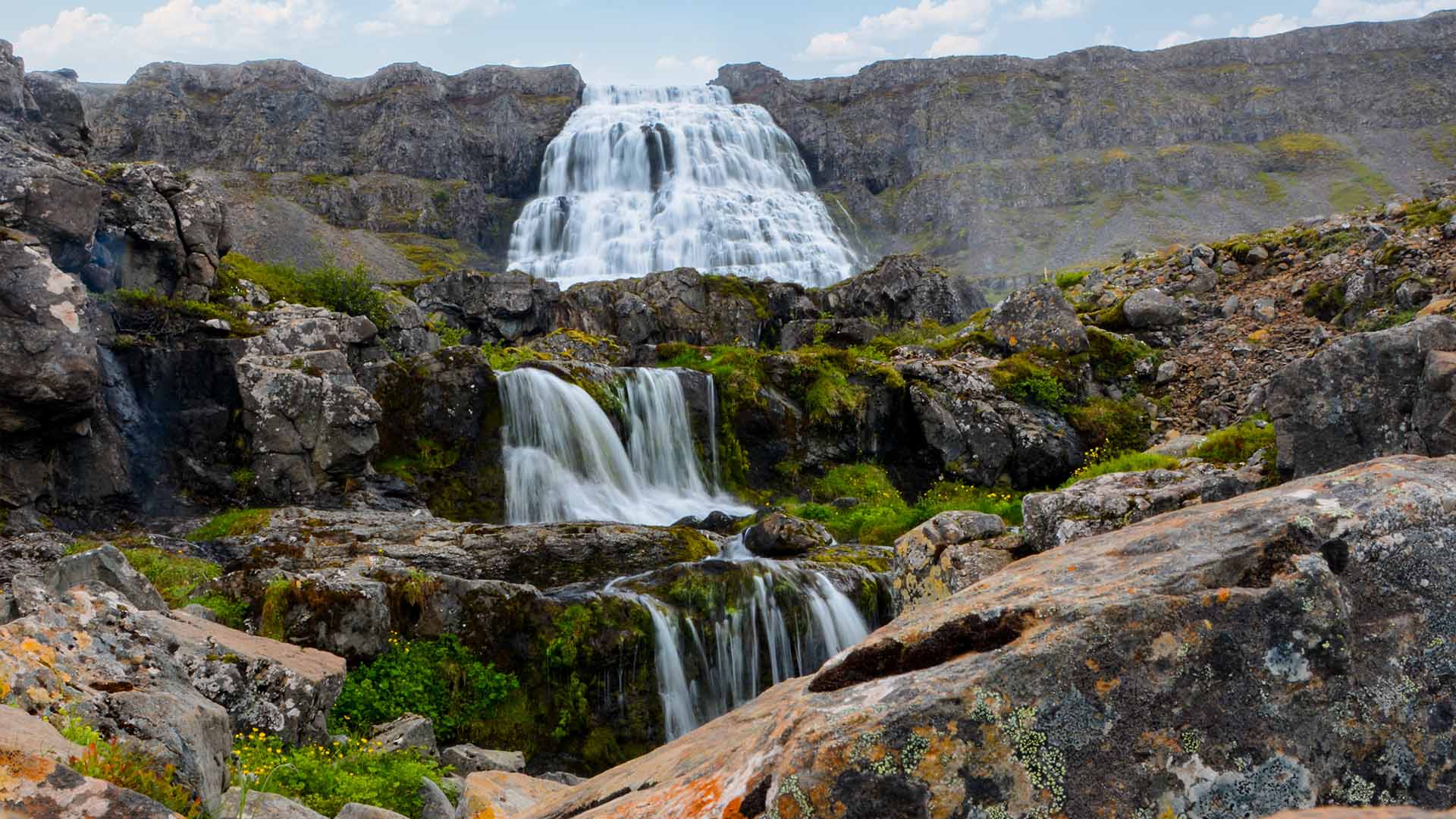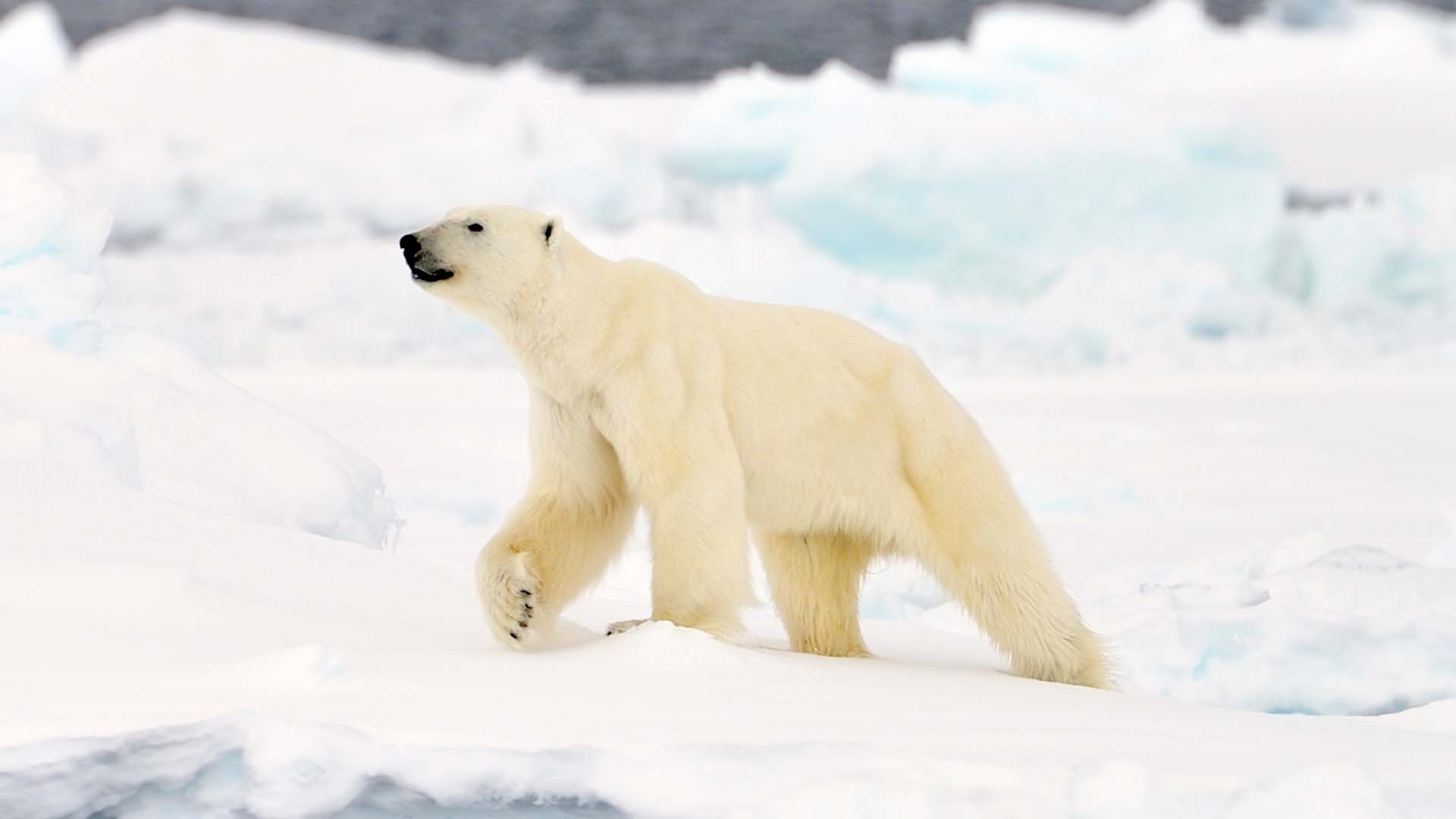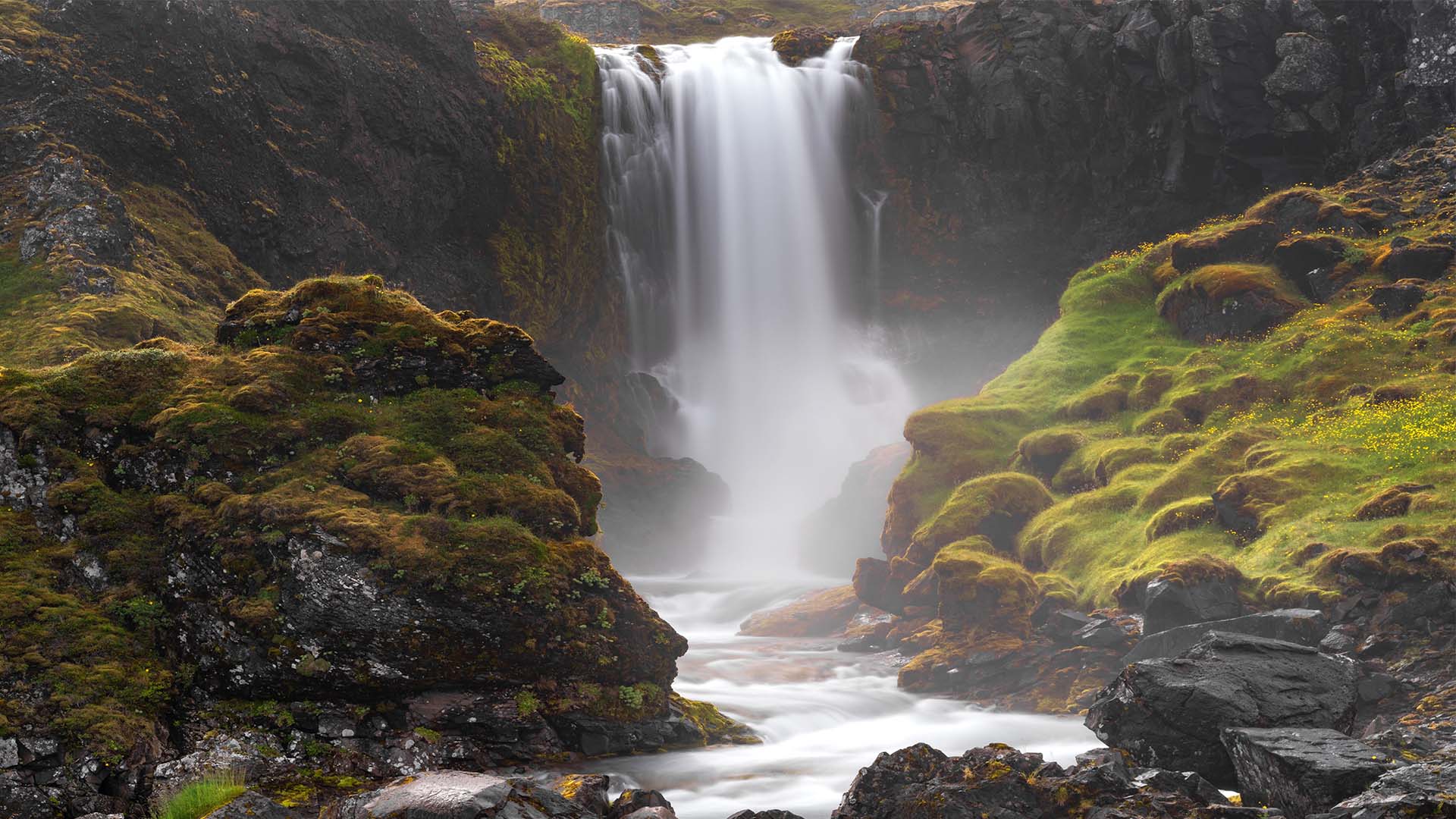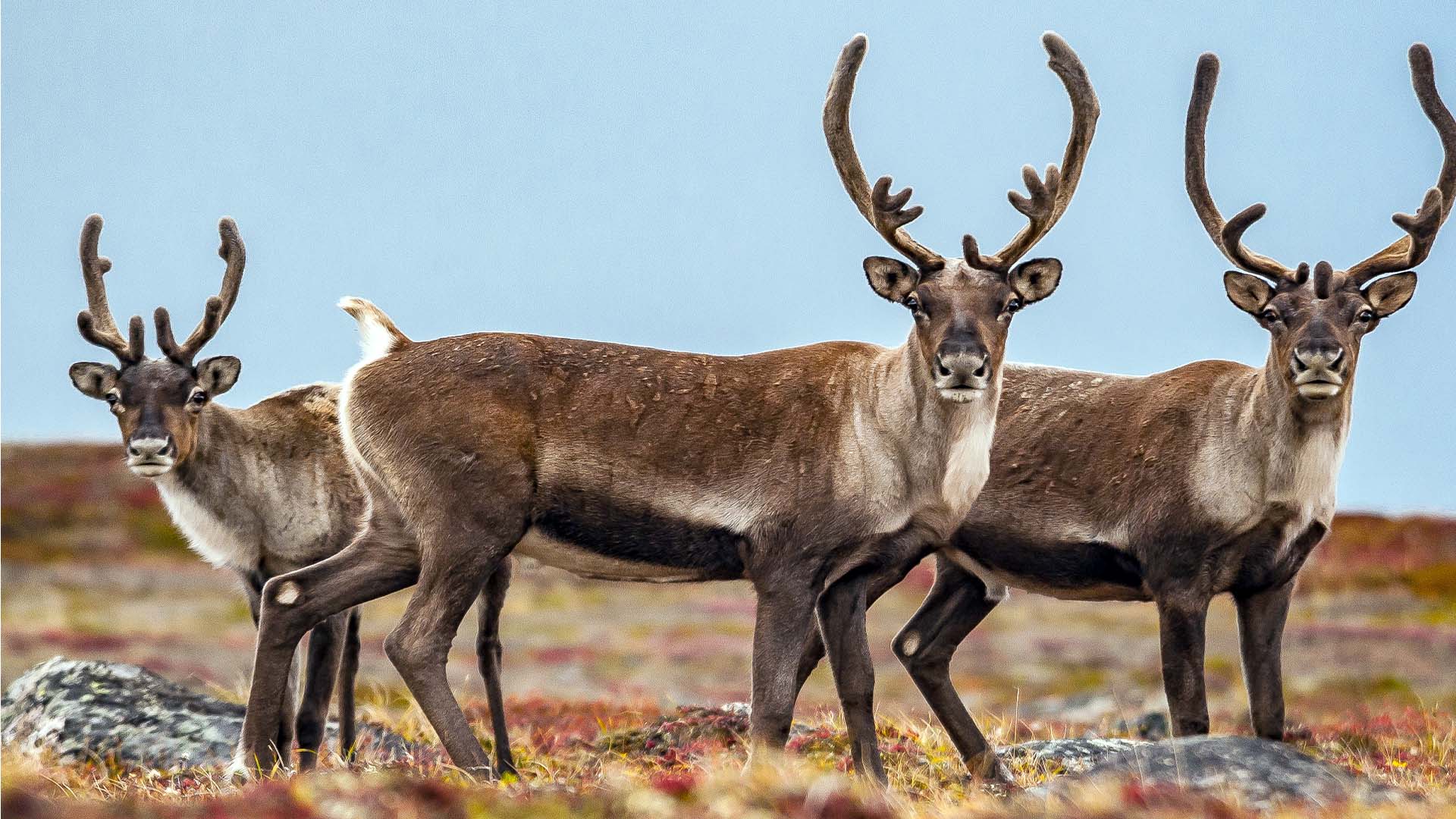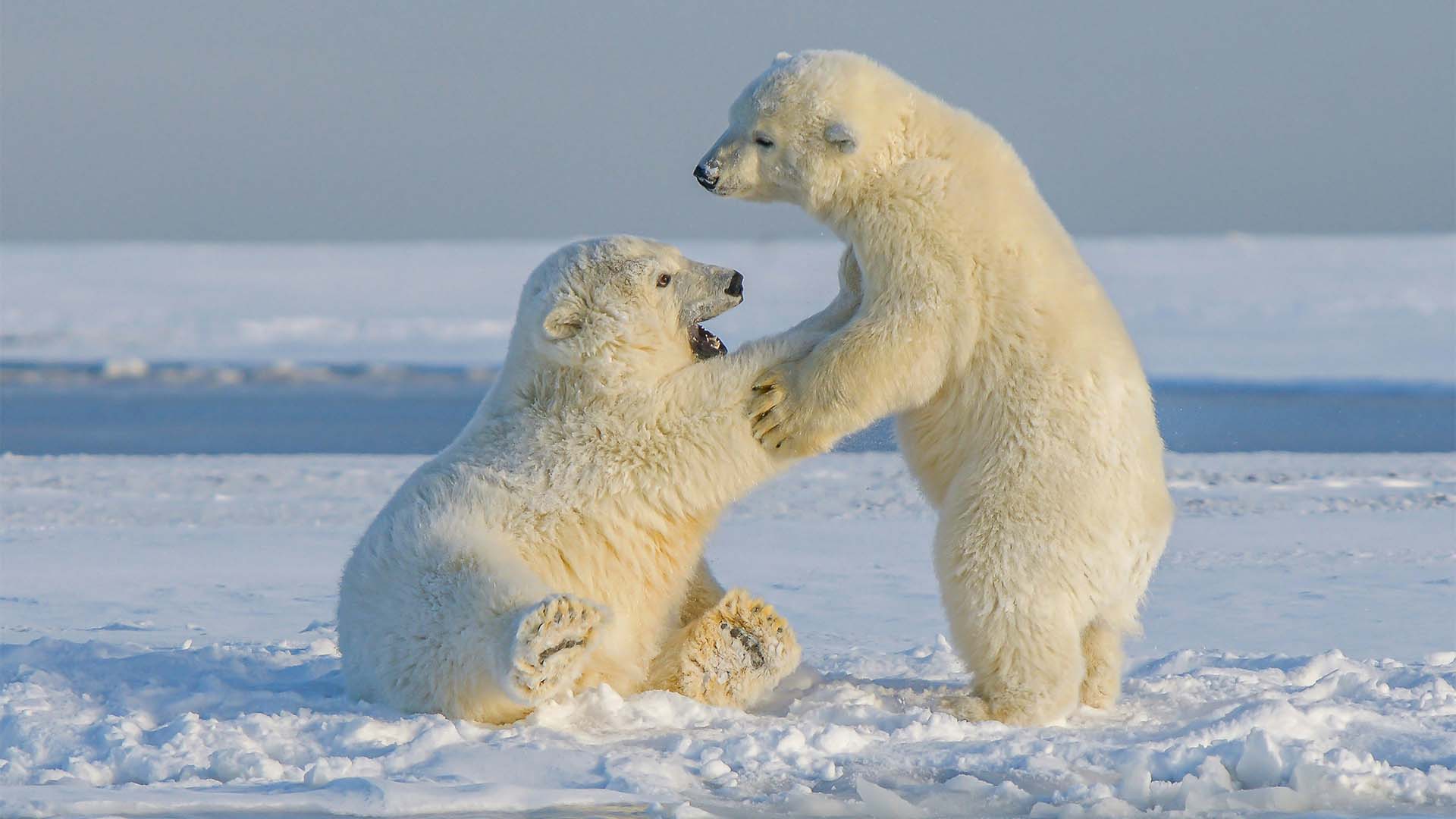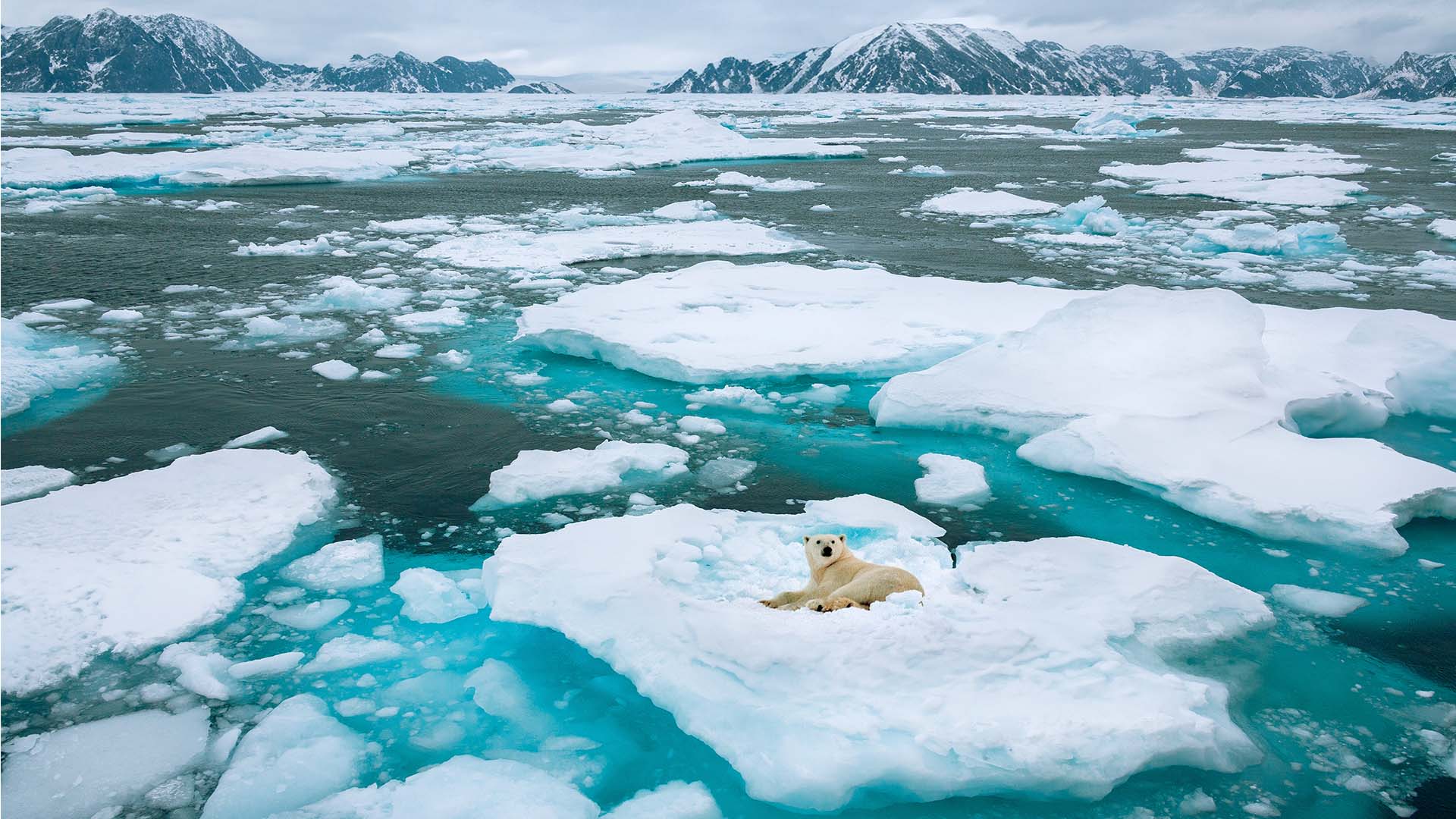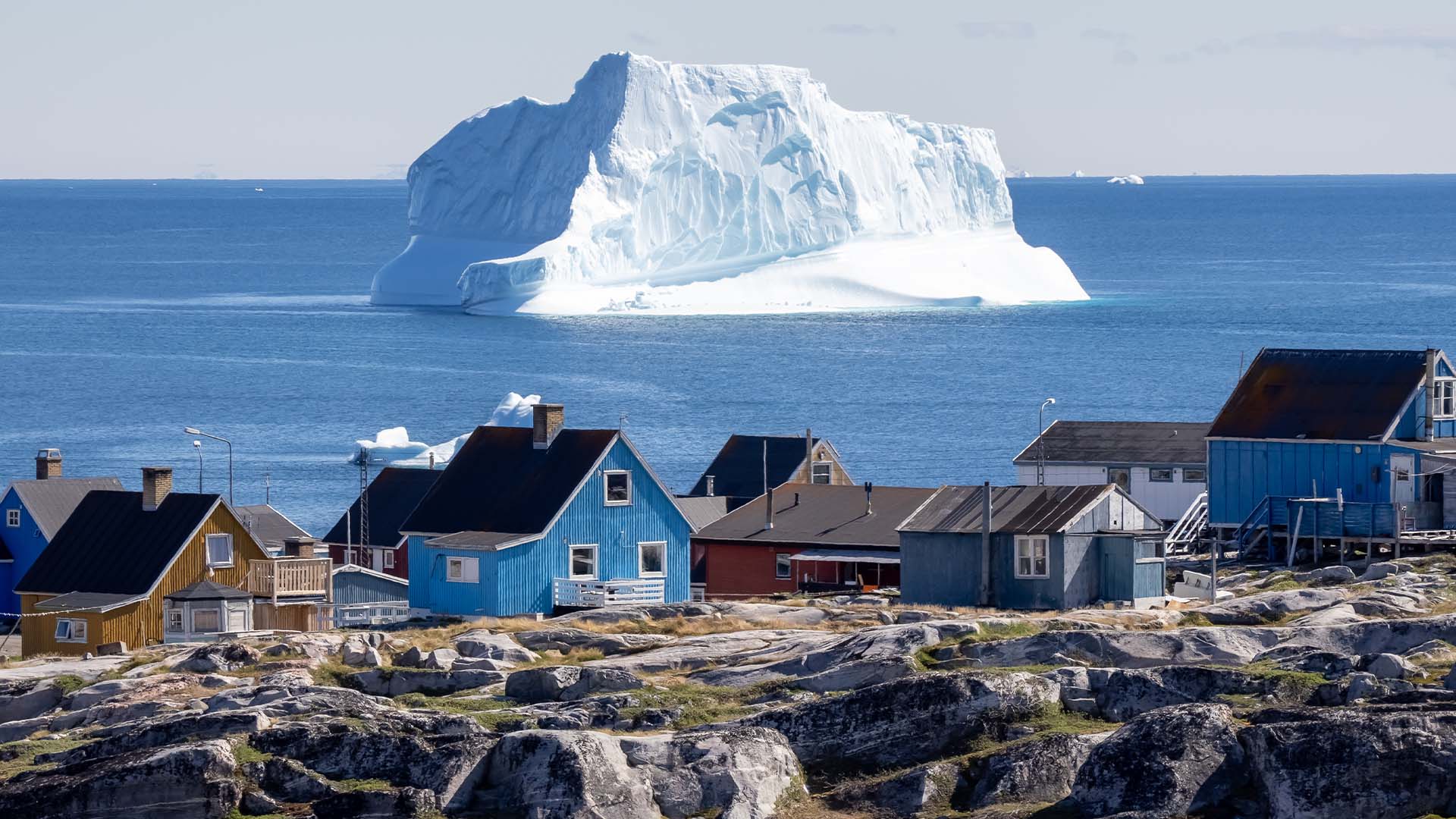Discover Wildlife
As we follow the migrations of whales, reindeer and the elusive polar bear, together we will come closer to extraordinary moments as we witness the majesty of these incredible animals. Summers in the High Arctic of Svalbard, Greenland and northern Canada are abundant with spectacular wildlife, from the charming Arctic fox to the many seals that swim gently through the icy waters. Take a look below at some of the magnificent creatures you may encounter.
On an expedition to the Arctic, keep your eyes open for the King of the Arctic. Roughly the size of large brown bears, the male polar bear reaches up to 1,700 pounds in weight and up to 10 feet in length. Their renowned white coat is water repellant and reflects sunlight to help them camouflage into the environment.
Look out for polar bears in the Svalbard region, where they tend to stay year-round. You may also have a polar bear sighting in Greenland and northern Canada.
Among the most famous polar animals is the reindeer, also known as caribou. While many believe only males have antlers, both males and females of the species have antlers, with the herd’s bull often donning the largest. Peoples of the Arctic domesticate reindeer, as their meat and pelts are important to their way of life.
Reindeer reside in the Arctic tundra, so you can often see them in the Svalbard archipelago and North Cape as well as Greenland and Canada.
The musk ox is rare worldwide, so to spot one in Greenland is truly a special event. While these creatures may look lumbering and gentle with their thick coat and stocky build, they can run up to 37 mph.
These charming creatures hold a special place in the hearts of the Icelandic people, as it is the only native mammal to the country. It’s believed they crossed into Iceland during the last Ice Age from Greenland. At full maturity, they weigh up to 10 pounds and are up to 43 inches long. While they’re most often depicted in their white fur – their natural coloring in winter – they can also be seen in brown fur in the summer.
Hunting and making its home amid the tundra environment, the Arctic fox can be found in Iceland, Greenland, Svalbard and northern Canada.
The pinnipeds of the Arctic are abundant and thriving throughout the Arctic regions and fjords of Norway and Greenland.
Keep your eyes on the water as you search for incredible aquatic wildlife throughout your Arctic expedition.
Although the frozen land of the Arctic seems an unlikely place for plant life to thrive, there are still a few types of organisms that will pique the interest of the scientific mind. Mosses, lichen, herbs and grasses make up the approximately 1,700 species of plants living in the Arctic tundra and desert. Because of a thin layer of soil and cold, harsh climate, only small plants with shallow root systems grow in the region.
Featured Expeditions
Seize the moment to embark on the expedition of a lifetime.
Join our email list to discover more.
Be the first to know about new voyages, offers, and updates.
*Required fields








